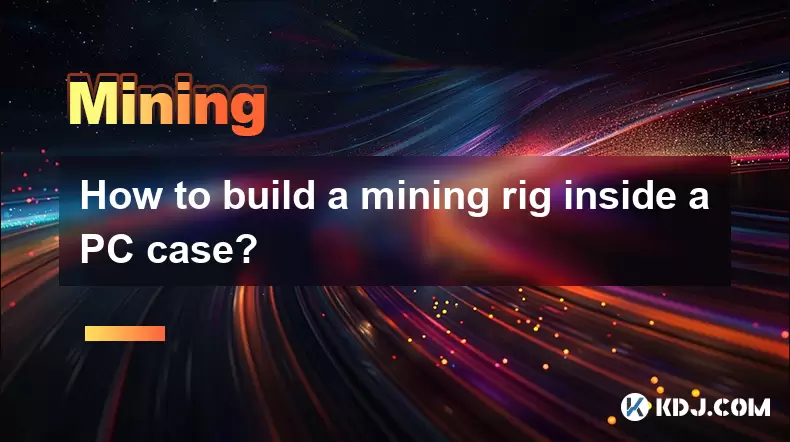-
 Bitcoin
Bitcoin $116700
0.24% -
 Ethereum
Ethereum $3973
4.34% -
 XRP
XRP $3.283
7.68% -
 Tether USDt
Tether USDt $1.000
0.01% -
 BNB
BNB $789.8
2.27% -
 Solana
Solana $176.2
3.31% -
 USDC
USDC $0.9999
0.00% -
 Dogecoin
Dogecoin $0.2238
5.14% -
 TRON
TRON $0.3389
-0.51% -
 Cardano
Cardano $0.7907
4.03% -
 Stellar
Stellar $0.4527
10.02% -
 Hyperliquid
Hyperliquid $41.07
4.27% -
 Sui
Sui $3.794
1.77% -
 Chainlink
Chainlink $19.49
10.40% -
 Bitcoin Cash
Bitcoin Cash $580.9
0.74% -
 Hedera
Hedera $0.2617
4.32% -
 Avalanche
Avalanche $23.41
3.67% -
 Ethena USDe
Ethena USDe $1.001
-0.03% -
 Litecoin
Litecoin $122.4
1.38% -
 Toncoin
Toncoin $3.364
1.49% -
 UNUS SED LEO
UNUS SED LEO $8.988
0.37% -
 Shiba Inu
Shiba Inu $0.00001295
2.82% -
 Uniswap
Uniswap $10.62
5.75% -
 Polkadot
Polkadot $3.922
4.46% -
 Dai
Dai $1.000
0.01% -
 Bitget Token
Bitget Token $4.494
2.15% -
 Monero
Monero $268.0
-1.30% -
 Cronos
Cronos $0.1523
3.68% -
 Pepe
Pepe $0.00001127
4.43% -
 Aave
Aave $285.4
4.85%
Why does mining require high parallel computing power of graphics cards?
Cryptocurrency mining's proof-of-work relies on solving complex cryptographic hashes. GPUs, with their massively parallel architecture, excel at this, outperforming CPUs which handle tasks sequentially. Higher hash rates, enabled by parallel processing, increase the chances of successfully mining blocks and earning rewards.
Mar 02, 2025 at 11:00 am

Key Points:
- The cryptographic hash functions at the heart of proof-of-work cryptocurrencies require immense computational power.
- Graphics cards (GPUs), with their massively parallel architecture, excel at performing the many calculations needed to solve these hash functions. CPUs, while versatile, lack the parallel processing capabilities to compete effectively.
- The race to solve these complex mathematical problems is the core of cryptocurrency mining, driving the need for high parallel computing power.
- Higher hash rate directly translates to a higher probability of successfully mining a block and earning rewards.
- Specialized ASIC miners now dominate Bitcoin mining, but GPUs still play a significant role in mining altcoins.
Why Does Mining Require High Parallel Computing Power of Graphics Cards?
Cryptocurrency mining, particularly in proof-of-work systems like Bitcoin, relies on solving computationally intensive cryptographic problems. These problems involve repeatedly hashing data – applying a complex mathematical function – until a specific output is found that meets predefined criteria. This "proof of work" demonstrates the miner's contribution to the network's security.
The difficulty of these problems is adjusted dynamically to maintain a consistent block generation rate. This means the required computational power constantly increases as more miners join the network. This escalating difficulty necessitates increasingly powerful hardware.
Central Processing Units (CPUs), while capable of general-purpose computing, are not optimally designed for this task. CPUs are designed for sequential processing, handling one task at a time. The nature of cryptographic hashing requires performing countless iterations of the same function, a task better suited to parallel processing.
Graphics Processing Units (GPUs), initially designed for rendering graphics, possess a massively parallel architecture. They contain thousands of smaller processing cores that can work simultaneously on different parts of the problem. This allows GPUs to tackle the numerous calculations needed for cryptographic hashing far more efficiently than CPUs.
The sheer number of calculations required makes the difference substantial. A single GPU can perform millions, or even billions, of hash calculations per second, far surpassing the capabilities of a single CPU. This higher hash rate translates directly to a higher probability of successfully mining a block and earning the associated cryptocurrency rewards.
The Role of Parallelism in Cryptographic Hashing:
The core of proof-of-work mining lies in finding a nonce – a random number – that, when combined with other transaction data, produces a hash that meets specific criteria. This involves repeatedly hashing the data with different nonces until a valid solution is found.
This process isn't about finding a single solution, but rather trying countless possibilities. The more calculations a miner can perform per second, the higher their chances of discovering a valid hash before any other miner. This is where the parallel processing power of GPUs becomes crucial. Each core within the GPU can independently work on a different nonce, dramatically increasing the overall computational throughput.
While early Bitcoin mining utilized CPUs, the escalating difficulty quickly made this approach impractical. The shift towards GPUs, and later specialized ASICs (Application-Specific Integrated Circuits), reflects the relentless pursuit of higher computational power.
GPUs vs. CPUs and ASICs in Mining:
- CPUs: While versatile, CPUs lack the parallel processing power necessary for competitive cryptocurrency mining, especially for established coins like Bitcoin. They are generally only suitable for mining less demanding altcoins with lower difficulty.
- GPUs: GPUs offer a significant advantage over CPUs due to their massively parallel architecture, making them a more viable option for mining many altcoins. They are generally more cost-effective than ASICs for mining less popular cryptocurrencies.
- ASICs: Application-Specific Integrated Circuits are purpose-built for cryptocurrency mining, offering significantly higher hash rates than GPUs or CPUs. They are highly specialized and typically only effective for a single cryptocurrency. Their high initial cost and lack of versatility make them less attractive for mining less established cryptocurrencies.
The Evolution of Mining Hardware:
The constant arms race in cryptocurrency mining has driven significant advancements in hardware. As mining difficulty increases, miners continuously seek more powerful and efficient hardware to maintain profitability. This has led to the development of specialized hardware like ASICs, which significantly outperform GPUs in terms of hash rate. However, GPUs remain relevant for mining certain altcoins where the difficulty is lower and the cost of ASICs outweighs the benefits.
Common Questions:
Q: Can I mine cryptocurrency with just a CPU?
A: While technically possible, mining with a CPU is generally unprofitable for most established cryptocurrencies due to the significantly lower hash rate compared to GPUs or ASICs. You might be able to mine some less popular altcoins with a CPU, but the returns are likely to be minimal.
Q: Are GPUs still relevant for cryptocurrency mining?
A: Yes, GPUs remain relevant for mining certain altcoins where the difficulty is lower and the cost of specialized ASIC miners is prohibitive. They offer a good balance between performance and cost-effectiveness in these scenarios.
Q: What is the difference between a hash rate and parallel computing power?
A: Hash rate refers to the number of cryptographic hashes a miner can compute per second. Parallel computing power refers to the ability of a system to perform multiple computations simultaneously. A higher parallel computing power directly contributes to a higher hash rate.
Q: Why are ASICs so dominant in Bitcoin mining?
A: ASICs are designed specifically for Bitcoin mining, offering significantly higher hash rates than GPUs or CPUs. This makes them far more efficient and profitable for mining Bitcoin, despite their higher initial cost. Their specialized design allows them to focus all their computational power on solving the Bitcoin hashing algorithm.
Q: Is GPU mining still profitable?
A: The profitability of GPU mining depends on several factors, including the cryptocurrency being mined, the electricity cost, the difficulty of the cryptocurrency, and the price of the cryptocurrency. It's essential to conduct thorough research and calculations before investing in GPU mining.
Disclaimer:info@kdj.com
The information provided is not trading advice. kdj.com does not assume any responsibility for any investments made based on the information provided in this article. Cryptocurrencies are highly volatile and it is highly recommended that you invest with caution after thorough research!
If you believe that the content used on this website infringes your copyright, please contact us immediately (info@kdj.com) and we will delete it promptly.
- Bitcoin, Litecoin, and Avalanche: Decoding the Crypto Buzz in the Big Apple
- 2025-08-09 00:30:12
- Pengu Takes Flight: Can This Solana Meme Coin Conquer the Top 3?
- 2025-08-09 00:50:13
- Coinbase's Big Bet: DEX Trading and the Everything App Vision
- 2025-08-09 01:30:12
- Ethereum and Shiba Inu: Navigating the Bull Move
- 2025-08-09 00:35:12
- Dogecoin, AI Coins, and CMC Listings: What's Hot and What's Not
- 2025-08-09 01:35:51
- Navigating the Crypto Market in 2025: Smart Decisions for Meme Coin Investing
- 2025-08-09 00:55:55
Related knowledge

What is "proof-of-work" and how does it relate to mining?
Aug 07,2025 at 02:03pm
Understanding the Concept of Proof-of-WorkProof-of-work (PoW) is a consensus mechanism used in blockchain networks to validate transactions and secure...

What are the differences between mining on Windows vs. Linux?
Aug 06,2025 at 11:29pm
Overview of Cryptocurrency Mining PlatformsCryptocurrency mining involves using computational power to solve complex cryptographic puzzles and validat...

How to use an old computer for cryptocurrency mining?
Aug 07,2025 at 12:42pm
Understanding the Feasibility of Using an Old Computer for MiningUsing an old computer for cryptocurrency mining may seem outdated, but it is still te...

Can you mine cryptocurrency using solar power?
Aug 07,2025 at 12:00am
Understanding the Basics of Cryptocurrency MiningCryptocurrency mining involves validating transactions on a blockchain network by solving complex cry...

How to build a mining rig inside a PC case?
Aug 06,2025 at 11:01pm
Understanding the Basics of a Mining Rig in a PC CaseBuilding a mining rig inside a PC case involves transforming a standard computer chassis into a d...

What are the best cryptocurrencies to mine with an ASIC?
Aug 08,2025 at 01:22am
Understanding ASIC Mining and Its Role in CryptocurrencyASIC stands for Application-Specific Integrated Circuit, a specialized hardware designed to pe...

What is "proof-of-work" and how does it relate to mining?
Aug 07,2025 at 02:03pm
Understanding the Concept of Proof-of-WorkProof-of-work (PoW) is a consensus mechanism used in blockchain networks to validate transactions and secure...

What are the differences between mining on Windows vs. Linux?
Aug 06,2025 at 11:29pm
Overview of Cryptocurrency Mining PlatformsCryptocurrency mining involves using computational power to solve complex cryptographic puzzles and validat...

How to use an old computer for cryptocurrency mining?
Aug 07,2025 at 12:42pm
Understanding the Feasibility of Using an Old Computer for MiningUsing an old computer for cryptocurrency mining may seem outdated, but it is still te...

Can you mine cryptocurrency using solar power?
Aug 07,2025 at 12:00am
Understanding the Basics of Cryptocurrency MiningCryptocurrency mining involves validating transactions on a blockchain network by solving complex cry...

How to build a mining rig inside a PC case?
Aug 06,2025 at 11:01pm
Understanding the Basics of a Mining Rig in a PC CaseBuilding a mining rig inside a PC case involves transforming a standard computer chassis into a d...

What are the best cryptocurrencies to mine with an ASIC?
Aug 08,2025 at 01:22am
Understanding ASIC Mining and Its Role in CryptocurrencyASIC stands for Application-Specific Integrated Circuit, a specialized hardware designed to pe...
See all articles

























































































